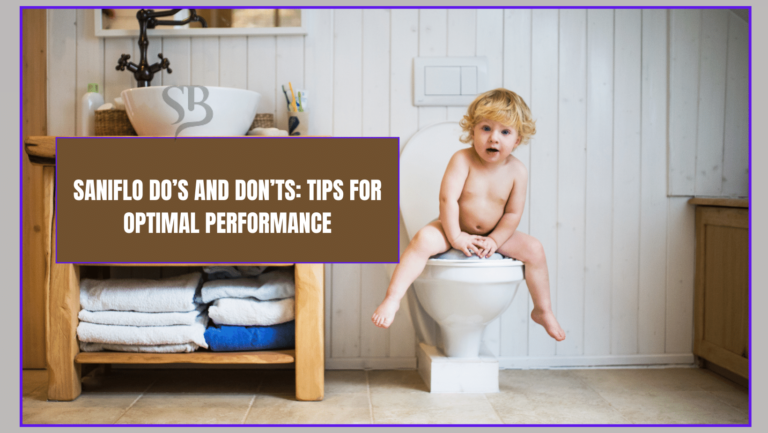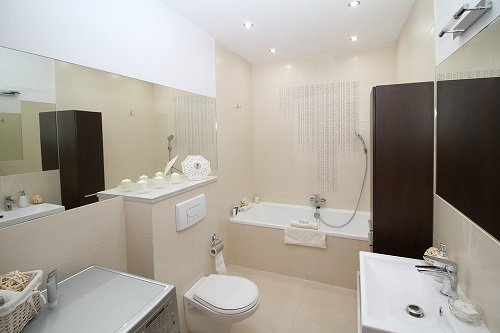Dealing with a clogged toilet can be frustrating and inconvenient in any home. If you don’t have a plunger in hand, you can rely on hot water and bleach to get the job done without too much difficulty or seeking help from a professional plumber.
Furthermore, the bleach method is the easiest and cheapest toilet unclogging approach that won’t leave you with a lot of mess in your bathroom.
Bleach is a diluted sodium hypochlorite solution with a high concentration of chlorine. In this guide, we show you how to unclog a toilet with bleach so you can get rid of the mess faster and more efficiently.
Should You Use Bleach To Unclog Toilet?
Some people think that using a plunger does not always work well; it often does not work well, especially in the lower drain.
So, whether you have a plunger or not, there are some everyday household items that you can use to clear out cheap toilet clogs quickly.
These include bleach, vinegar, baking soda, and many other everyday household items. In other words, you can quickly unclog a toilet with bleach.
Bleach is used to clean stubborn stains on clothes and other materials. Almost everyone knows about the power of bleach; it can quickly get rid of stubborn stains on clothing or any other object. But did you know that it can also unclog your toilet bowl and disinfect it effectively?
Bleach is a commercial generic name for a water-based chemical called hypochlorite. Toilets become blocked because of the accumulation of garbage that keeps getting stuck inside them. These stubborn objects do not want to come out. Bleach has the ability to break down waste and remove all the waste.
Bleach causes chemicals in your toilet to form zircon, which causes oxygen molecules to be released. This is called bleaching, and it is used to clean and disinfect your toilet. If you are having a toilet clog, it is very important to use commercial bleach because it is very effective.
These bleaches are very useful for removing and disinfecting clogs caused by foreign objects besides toilet paper. Bleach helps to remove clogs from toilets and kills germs that can cause diseases.

Unclogging a Toilet with Bleach
Things Needed
- 1-2 cups of commercial bleach
- Gloves
- 2 gallons of hot water
- Goggles
- Rubber gloves
- Ventilation fan
Protective gear is crucial for protecting your lungs, skin, and eyes. It’s important to ensure that your toilet doesn’t have any chemicals that may react with the bleach you’re about to use to unclog the toilet.
All these safety precautions should be adhered to avoid any possible bathroom accidents as you go about the toilet unclogging process.
Steps for unclogging the toilet using bleach.
- 1st Step: Put on the goggles to cover your eyes and gloves to protect your bare hands. It’s also advisable to wear long pants and a long-sleeved shirt to protect the other parts of the body in case of splashes from the cleaning.
- 2nd Step: Open all the doors and windows, and turn on the ventilation fan for proper aeration. This ensures that no fumes build up in your bathroom or the entire house.
- 3rd Step: Pour the commercial bleach into the toilet unit
- 4th Step: Leave the solution to sit for about 30 minutes to work on the clogging materials.
- 5th Step: Fill the bowl with hot water and wait for about 10 minutes.
- 6th Step: Flush the unit three times.
- 7th Step: Use any remaining hot water to clean the toilet and remove any remnants. You’ll realize that if this process doesn’t seem so effective, you may have to add vinegar and baking soda to get the best unclogging results. Even though bleach won’t dissolve everything that is blocking the drain of your toilet, it’ll disinfect the entire system.
How to Prevent Toilet Clogs
Here are some simple ways to prevent clogs from forming in the first place.
Don’t Flush Non-Flushable Items
There is a good chance that a certain item will cause the wastewater in your pipes to stop flowing. There are several non-flushable things that people tend to keep flushing. The first things you should not flush down the toilet are feminine products.
These products expand when you flush them, so the water you are putting down the toilet will not drain properly. These substances can cause problems to your toilet by blocking the sewer system.
Furthermore, they take a very long time to break down or simply don’t break down. It would be best if you also were careful where you put your cleaning wipes and paper towels.
Even if the packaging box says it is “flushable,” it doesn’t mean it won’t cause problems for your pipes. If you have to use these products when visiting the bathroom, just toss them in the trash instead of flushing them down the toilet.
It would be best if you didn’t flush your Q-tips and cotton balls down the toilet. They can cause blockages in the pipes. When these items get wet, they can quickly get stuck together in your pipes. When that happens, the pipes will be clogged.
Grease is a big no-no as well. Even if you pour some in the water, it will start to build up in your pipes once the water has cooled down. Interestingly, grease causes many sewer backups.
Monitor your main sewer line
There may be problems with the main drain or sewer line that cause the drain to become obstructed. If the drain line in your home is too old or damaged, you can expect solid waste to start to accumulate.
In some neighborhoods, a clogged main sewer line can cause multiple toilets to clog up at the same time. If that is the case, you need to call a professional plumber to take care of it. Ensure you act earlier enough before the problem escalates into a costly plumbing issue.
Don’t use too much toilet paper
Toilet paper is easy to flush, but too much can cause a clog in the pipes. Toilet paper disintegrates with ease every time it’s flushed down the loo.
But, if you flush a lot of it, your pipes may create a backup. Often, this happens when there is already a clog in your sewer system. Toilet paper can cause problems when it mixes with other items.
To make matters worse, bleach will not help you in unclogging your toilet if the clogging is caused by too much toilet paper or hair.
If that is the problem you’re facing in your bathroom, you may need to try a drain snake to dislodge the blockage. In fact, if the problem is bigger than that, your only other viable option is to contact a professional plumber.
Clear the plumbing vent
If your vent is up on your roof, it may be in contact with different types of outside elements. Over time, things that can clog up the vents are things that you can find in the yard. Leaves, sticks, and bird nests can easily cause a blockage in your vents. Blockages can cause the drains to become congested. You also lose water because you cannot drain the waste water completely.
Soften hard water
Most people are unaware of the difference between hard and soft water. Some of the minerals found in hard water will calcify over time. If this occurs, a hard white substance that is very difficult to remove will form in your piping system.
Too much of this calcified substance can cause clogs in your toilets because it closes the area that allows waste to pass through. You may call a professional plumber to help you get rid of this substance. If you have hard water, you may want to install a water softener to prevent problems in the future. The water is softened right before it reaches your toilet. Then, it can easily be flushed.

Replace old pipework
Old pipes can cause serious problems to your plumbing resulting in serious clogging problems in your toilets. When pipes are old, they may collapse and cause clogs. One of the signs that you need to watch out for is that the toilets are leaking a lot of water.
If you have more than one toilet in your house and all of the toilets seem to be clogged, the pipework damage might be more severe.
It would be best if you had a plumber come out and inspect the pipes. If any parts of the pipes are damaged, you may need to get some repairs done. Plan to do some pipe replacement work if you need to upgrade your plumbing system.
Buy a modern toilet model
Sometimes, the toilet itself causes clogging trouble. Old-generation toilets are one of the most problematic because they often have low flow. This type of toilet can cause problems, especially when the water pressure is too low.
The unit doesn’t have sufficient capacity to push down solid waste. This is evident, particularly in toilets built in the mid-to-late-90s. But, if you invest in a modern design, you can rest assured of lower water consumption per flush and a powerful flushing technology that thoroughly cleans the toilet bowl. A powerful flush pushes all the solid waste down the drain effectively.
Wrap Up
With bleach and hot water, you can effortlessly unclog your blocked toilet. Bleach breaks down the blockages and disinfects the waste in the drain.
It’s a toilet unclogging method that has proven to be very effective, as most residential toilet clogs are not as extensive as the toilets in commercial or public settings. You should always avoid flushing non-biodegradable materials down the toilet to avoid future toilet clogs that may end up costing you a lot of money in repairs.







